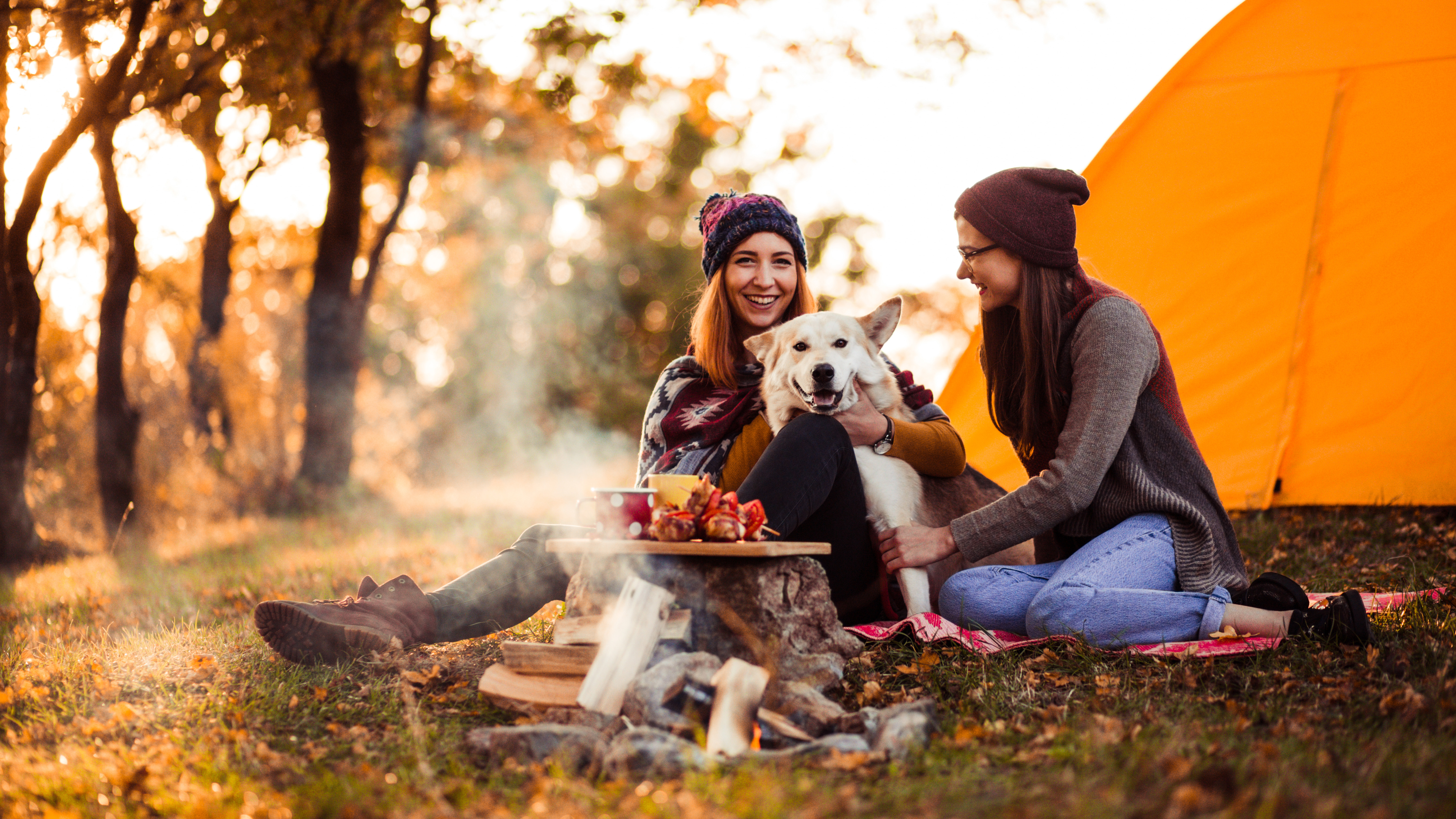
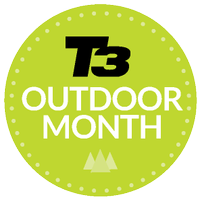

Like most outdoorsy dog owners, I love hiking and backpacking with my four-legged friend. Camping with a dog can enrich the experience for families and couples and—if you’re heading out on an otherwise solo adventure—transform a potentially lonely experience into a much more convivial one. But can you take canines camping no matter where you’re planning to go? And what about other pets?
Here, we examine the pros and cons—and the shoulds and shouldn'ts—of taking dogs and other animals camping.
Camping with dogs
The connection between humans and hounds in the wilderness goes back thousands of years, deep into prehistory.
It’s a symbiotic relationship: we supply food, shelter, and an occasional ear scratch; they provide security, safety, warmth, and—most importantly, in these less dangerous days when attacks from sabre-tooth tigers are rare (even in Wales)—companionship.
I’ve shared all kinds of camping tents with my dogs over the years, in lots of different scenarios, from family outings pitched in commercial sites through to wild bivvies in the middle of nowhere. The kids love it when she is with us, and I very much appreciate the company when I’m off exploring on my own (I talk her ears off).
For the most part, I think the dog absolutely loves the experience too – she lives for walks, and camping outings are just one long extended walk – but it’s important to think about the well-being needs of your animal to make sure they’re happy and safe.
There are also several important environmental factors to take into account to ensure you’re not negatively impacting other people’s enjoyment of the outdoors or endangering wild flora and fauna. And then there are some practical considerations to make the experience more comfortable for everyone, and avoid damaging your best camping kit.
Sign up to the T3 newsletter for smarter living straight to your inbox
Get all the latest news, reviews, deals and buying guides on gorgeous tech, home and active products from the T3 experts
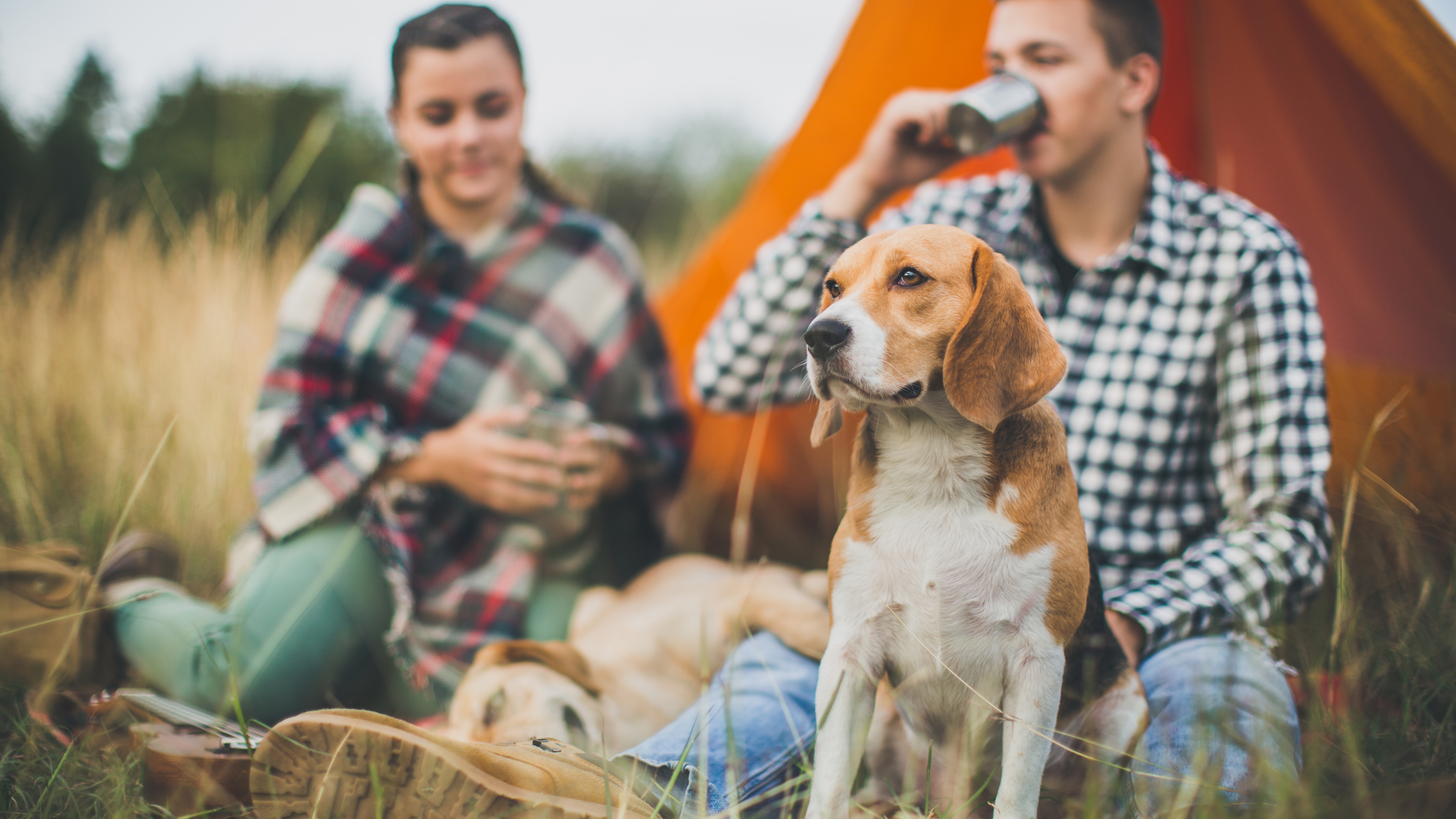
Be responsible
When visiting commercial campsites, check that they allow dogs before you book. If you have a barker, that can be a real problem for everyone around you, and some obedience training might be required before you attempt to take them camping.
When wild camping, check that the area where you’re intending to go is suitable. Dogs can chase and kill wild animals, from rabbits right through to deer, and at certain times of the year, the eggs and chicks of ground-nesting birds are very vulnerable. To protect delicate flora and fauna, some nature reserves and wetlands to not allow you to bring animals in. Dogs can also harass livestock such as sheep in fields and on moors, and faecal waste can cause serious diseases.
Please be very conscious of all these considerations. Always obey signage, keep your dog on a lead if there’s any chance it might cause damage, and clean up after your animal. It’s worth remembering that you are less likely to encounter wild animals when you’re hiking and camping with your dog because other animals will sense you and stay away.
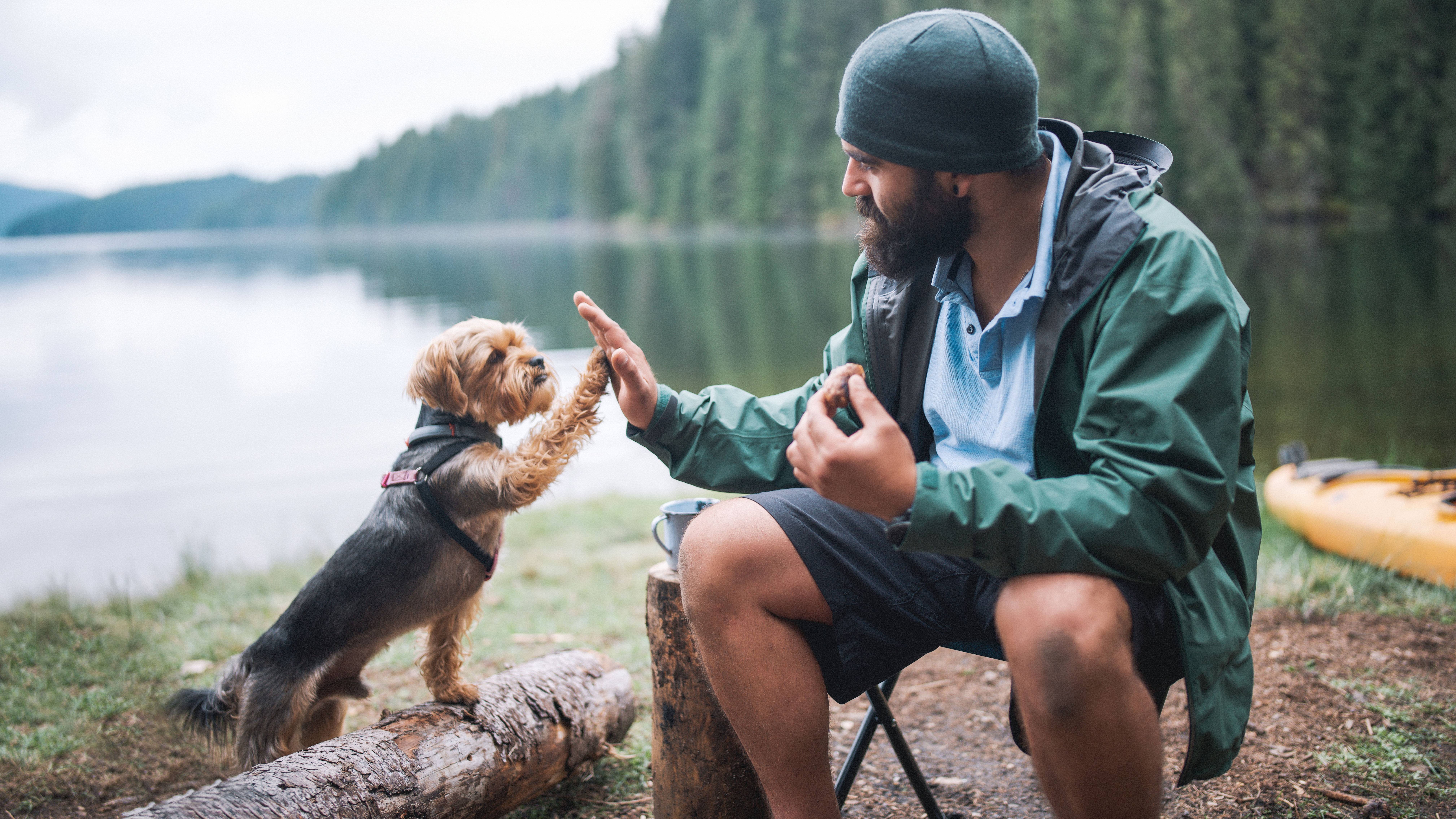
Canine comfort
Just like when you’re running with a dog, before taking canines camping, you really need to do some research and planning. If you’re backpacking with your buddy, think about the terrain you’ll be covering. While your feet are protected by your best hiking boots or walking shoes, your poor dog’s paw pads can become painful if it’s out all day running around on rough surfaces. Limit your distance in such terrain, or look into some paw protectors.
Be mindful of the heat. Midsummer is not the best time to walk any distance with your dog, and remember that tents can get very hot (never leave your animal inside a tent during the day).
Check whether there is a reliable water source close to where you’re planning to pitch. Dogs will happily drink out of any old stream, pond or puddle, so unless you’re trekking through a desert (don’t do that with a dog), you shouldn’t need a dedicated hiking water bottle, but do take a collapsible bowl just in case.
It might look cute to kit your canine out with a little doggie pack [retailer link], but be very careful not to overload them with weight, and just accept that you will need to carry most of their kit and food (very important!) in your own hiking backpack.
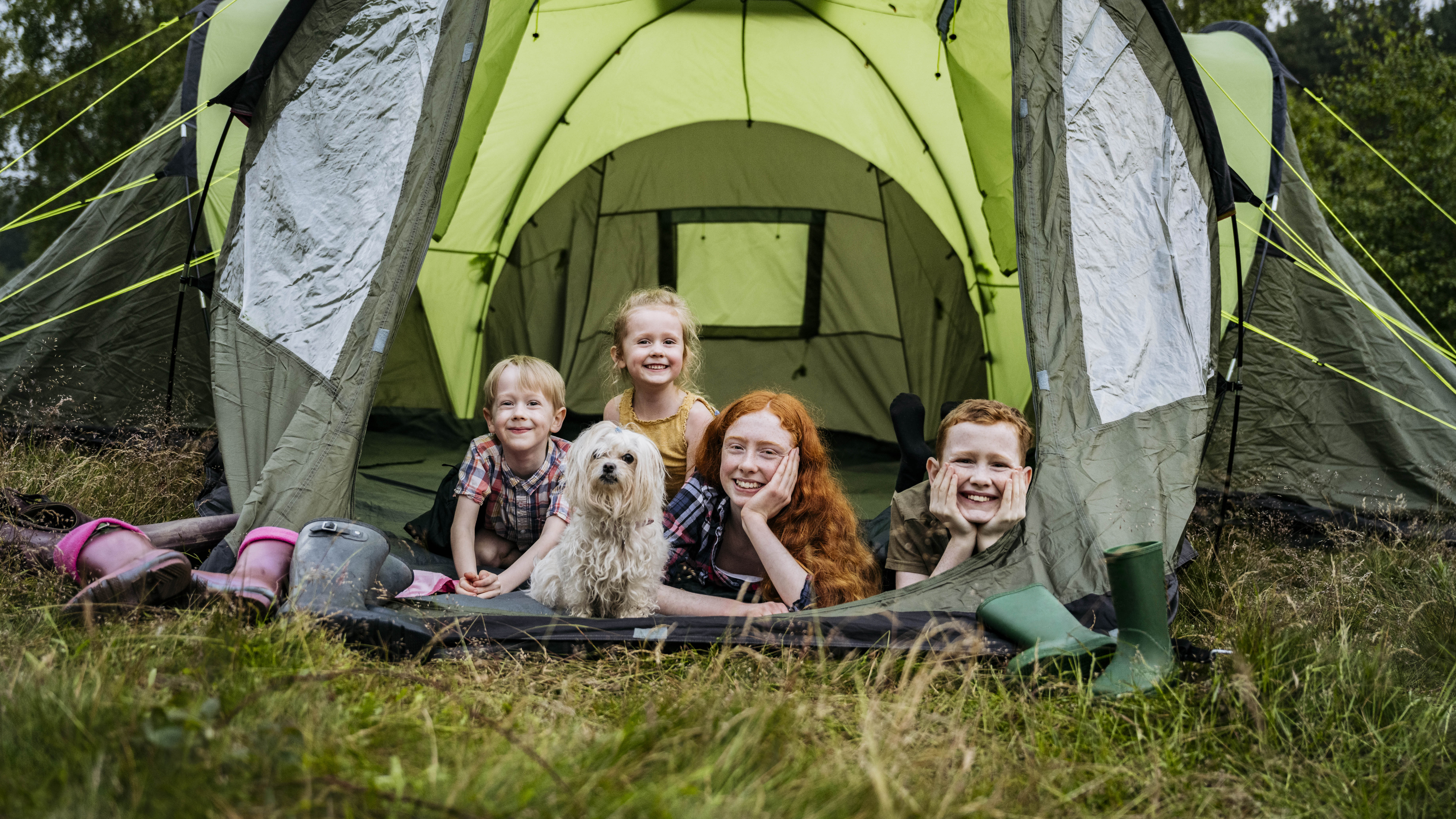
Human health
A quick cautionary tale: Last summer, I went wild camping on Dartmoor with my daughter Alice and our dog Rosie. Initially, everything went perfectly. We enjoyed a great hike, pitched our backpacking tent by a stream, cooked a lovely dinner under the stars and then prepared for bed. Alice was super excited about having the dog in the tent with us… until she started finding ticks on her legs and arms.
Rosie had been running around in the undergrowth, and her fur was covered in annoying arachnids. After painstakingly de-ticking ourselves, shaking out all our kit, and inspecting the tent with a torch, the poor dog was relegated to the vestibule, and we finally got some sleep. It was a lesson well learned, and now I take a brush with me if the dog is going to come anywhere near the tent.
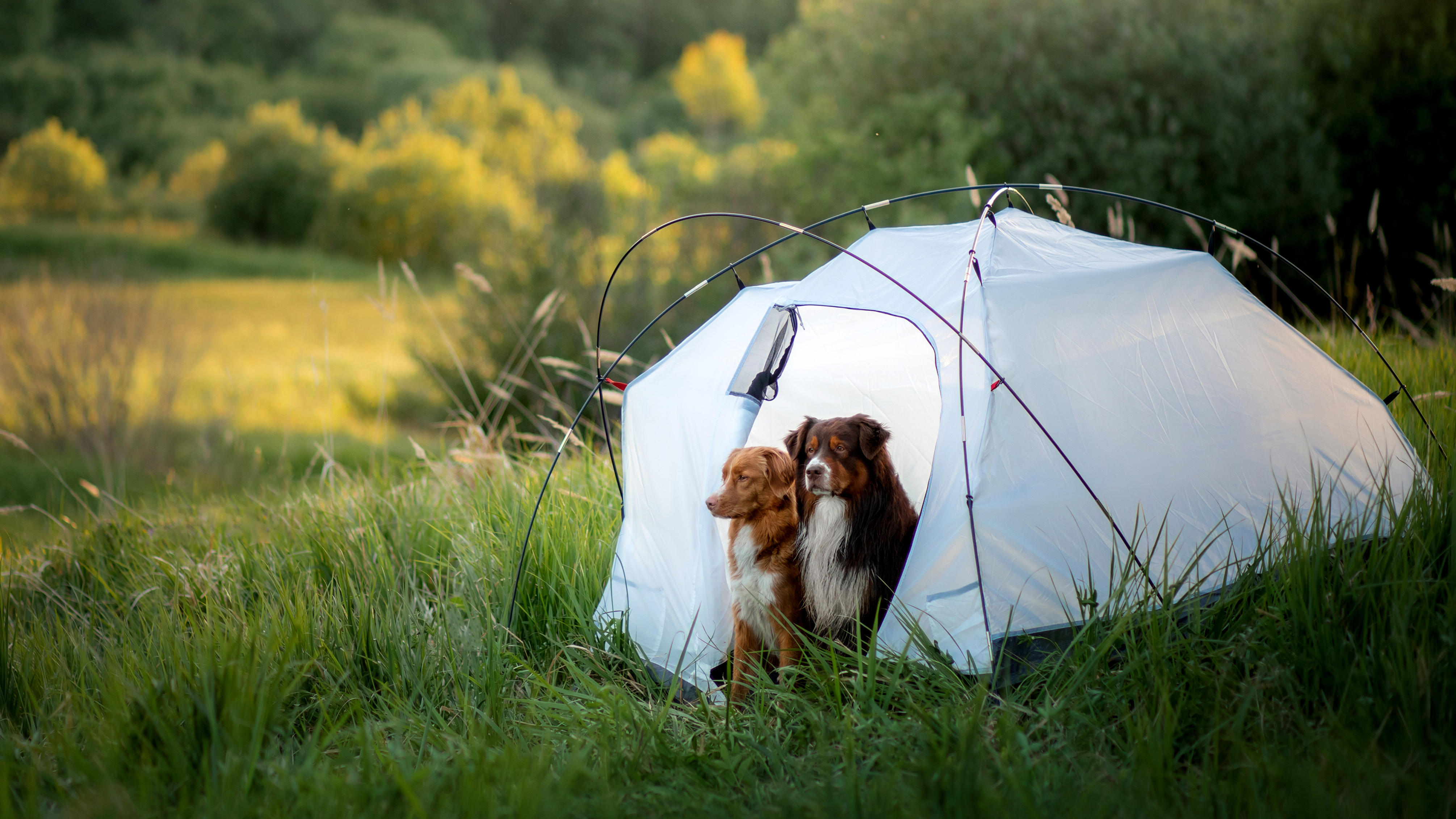
Other tips and tricks for camping with dogs
The best camping equipment can be pricey, and I, for one, get very nervous about letting my dog trample all over my top-quality inflatable camping mat and get hair and slobber on my favourite sleeping bag. When you’re camping with your dog, it’s wise to leave your most precious outdoor kit at home and take the cheaper, older gear out instead.
You might have packed your best waterproof jacket, but if it pours with rain, your dog will get wet through, and the first thing it will do when it gets in the tent is shake all that moisture off – all over your stuff. It’s well worth taking an old travel towel (or microfibre cloth) to wipe your dog down before you let it in the tent.
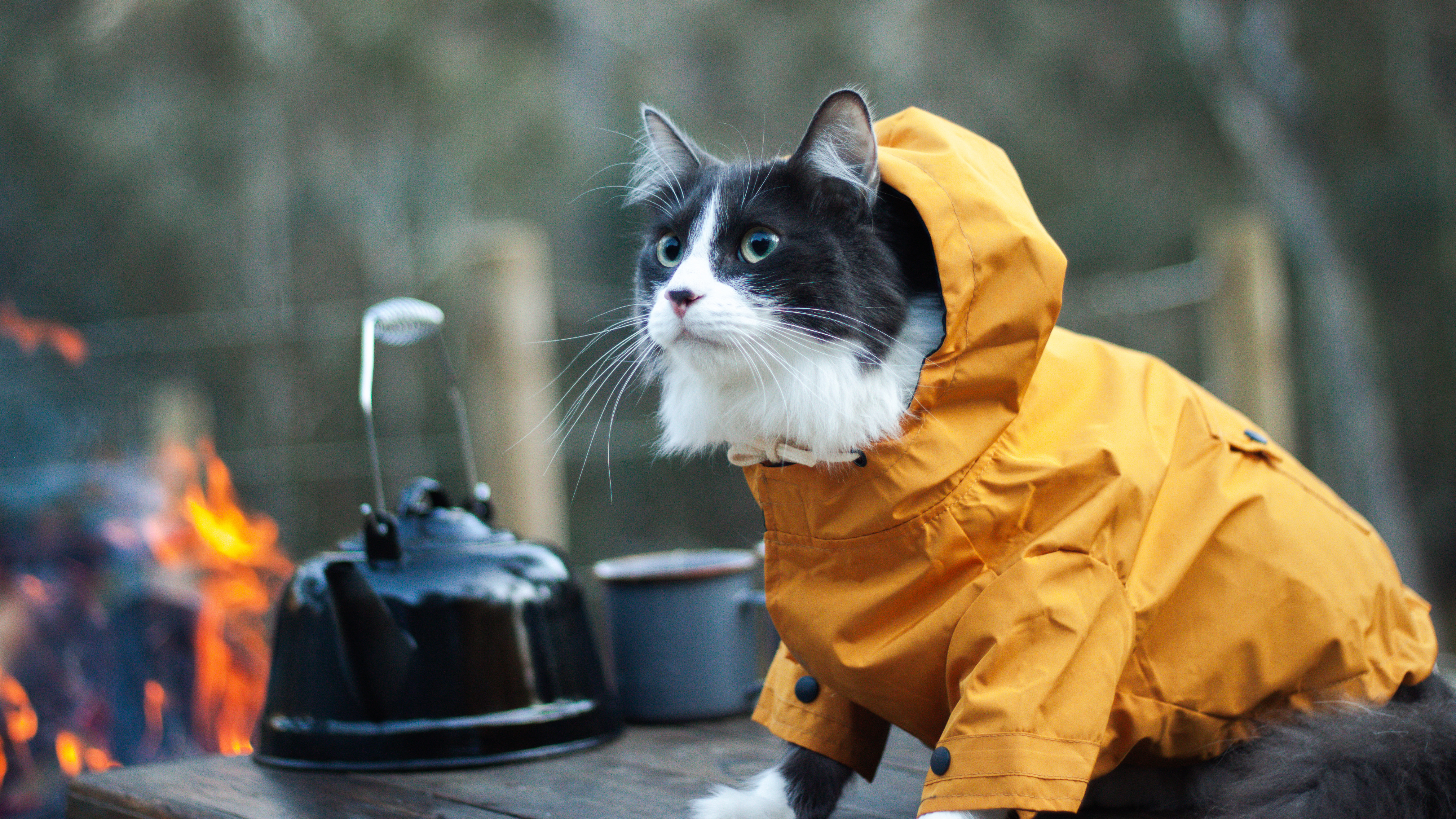
Camping with other animals
There are multiple blogs and social media posts out there explaining how to go camping with a cat. Personally, I wouldn’t let a sharp-clawed feline anywhere near my tents or other outdoor kit (even the old stuff), and I’d be even more worried about the damage a cat could do to wild animals since they’re such excellent hunters. The number one rule is to keep cats on a leash at all times. And as for the goldfish…just leave it at home.

Author of Caving, Canyoning, Coasteering…, a recently released book about all kinds of outdoor adventures around Britain, Pat Kinsella has been writing about outdoor pursuits and adventure sports for two decades. In pursuit of stories he’s canoed Canada’s Yukon River, climbed Mont Blanc and Kilimanjaro, skied and mountain biked across the Norwegian Alps, run ultras across the roof of Mauritius and through the hills of the Himalayas, and set short-lived speed records for trail-running Australia’s highest peaks and New Zealand’s nine Great Walks. A former editor of several Australian magazines he’s a longtime contributor to publications including Sidetracked, Outdoor, National Geographic Traveller, Trail Running, The Great Outdoors, Outdoor Fitness and Adventure Travel, and a regular writer for Lonely Planet (for whom he compiled, edited and co-wrote the Atlas of Adventure, a guide to outdoor pursuits around the globe). He’s authored guides to exploring the coastline and countryside of Devon and Dorset, and recently wrote a book about pub walks. Follow Pat's adventures on Strava and instagram.